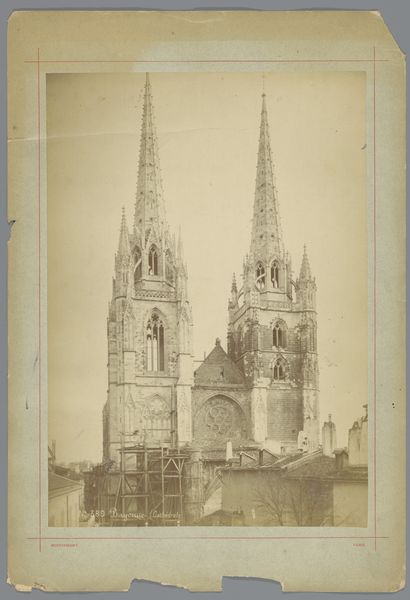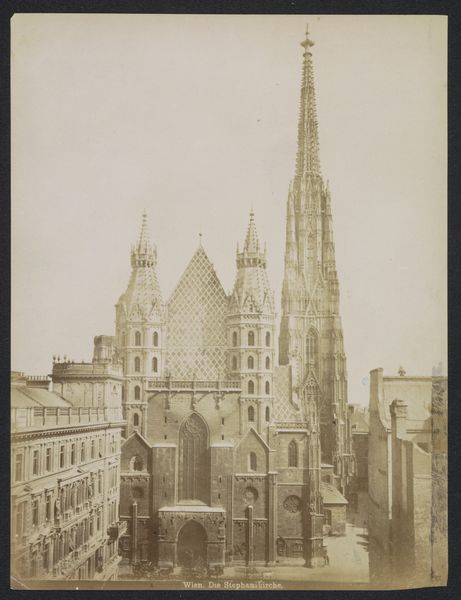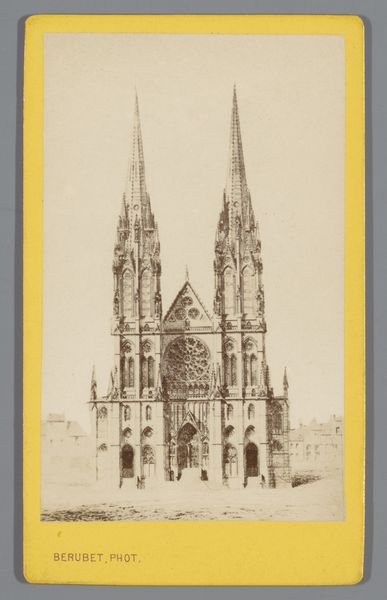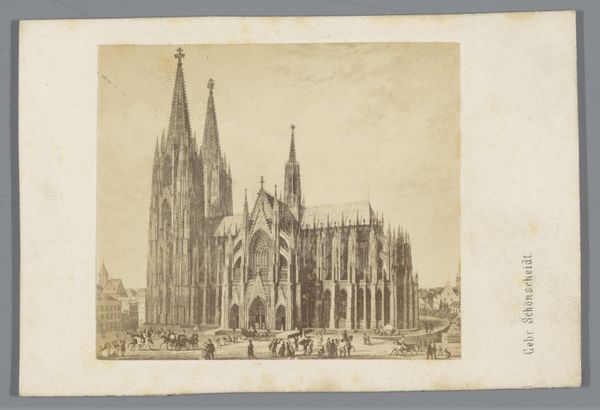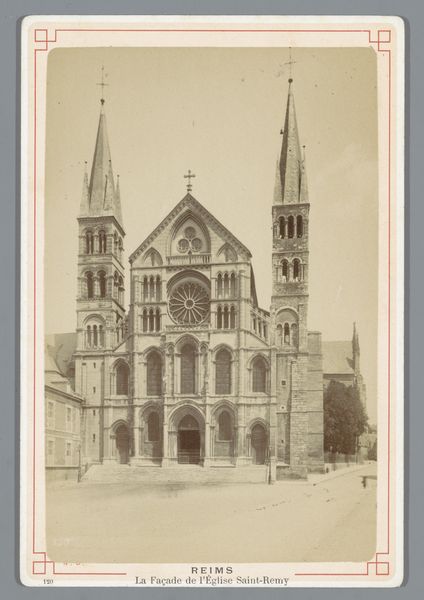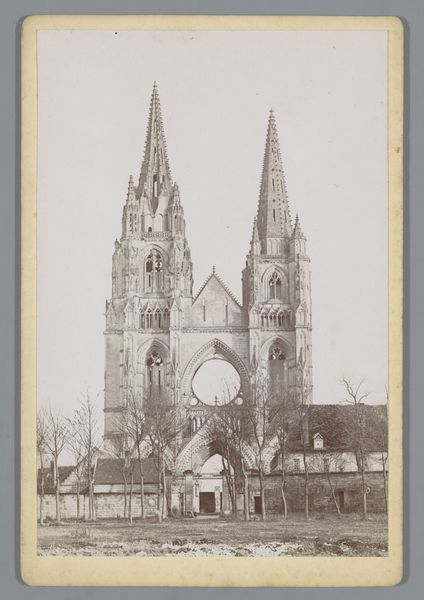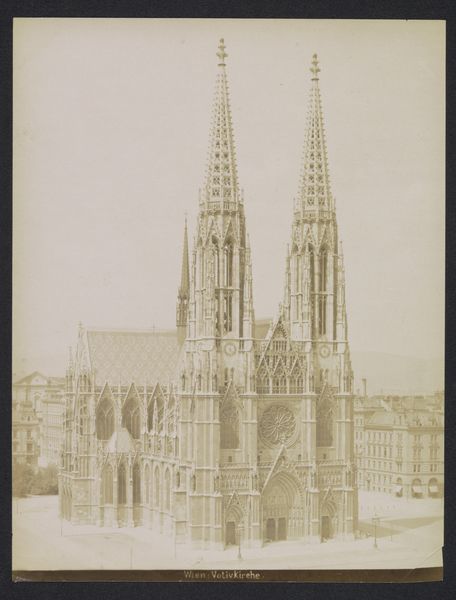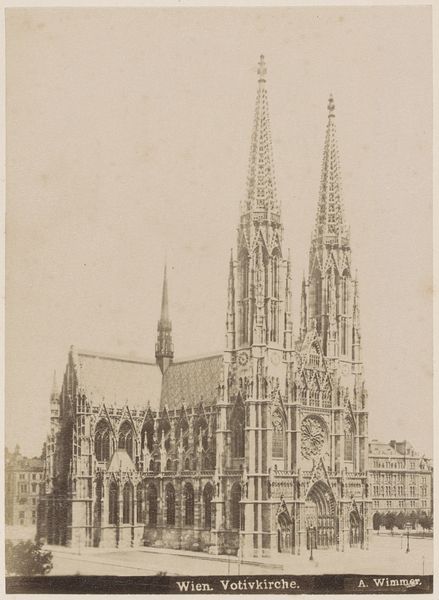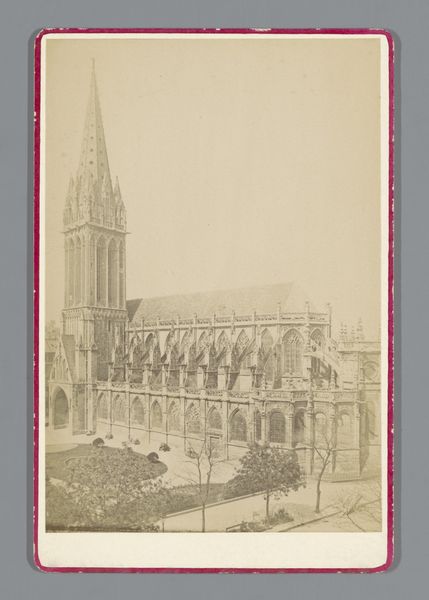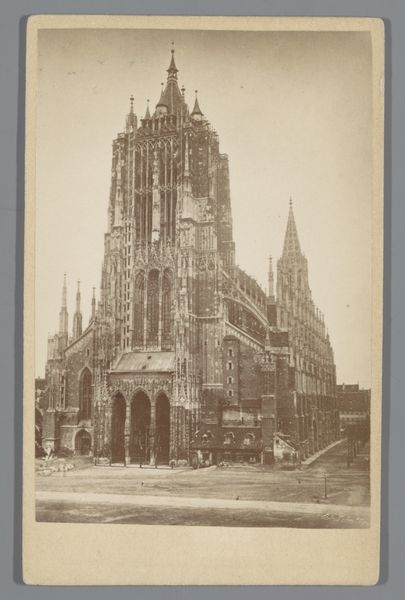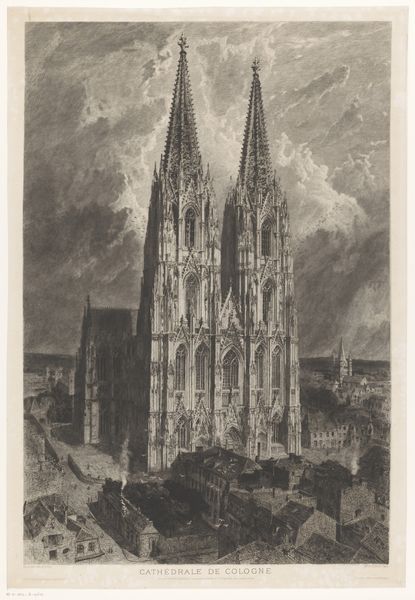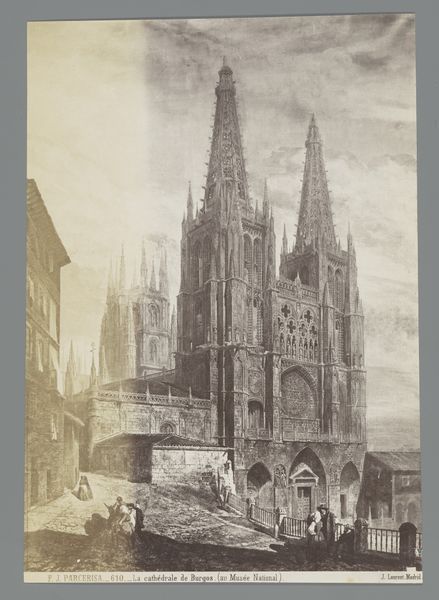
Dimensions: height 168 mm, width 108 mm
Copyright: Rijks Museum: Open Domain
This is Anselm Schmitz’s ‘Gezicht op de Dom van Keulen,’ a photograph from 1883. Back then, photography was a complex craft, involving a deep understanding of chemistry and optics. Consider the material reality of this albumen print. The process involved coating paper with egg white, then sensitizing it with silver nitrate. The negative was pressed against this prepared surface and exposed to light, creating a latent image that was then developed and fixed. The sepia tones result from the reaction of silver salts, light, and organic matter. The photograph is also a product of its time, a testament to the emerging industrial era. Photography itself was an innovation driven by technological advancement and mass production, providing a means to reproduce images quickly and disseminate them widely. So, when we look at this photograph, we're not just seeing the Cologne Cathedral, but also the convergence of art, craft, and industry. It is a reminder that the value and meaning of an artwork reside not only in its aesthetic qualities but also in the materiality and process of its creation.
Comments
No comments
Be the first to comment and join the conversation on the ultimate creative platform.
